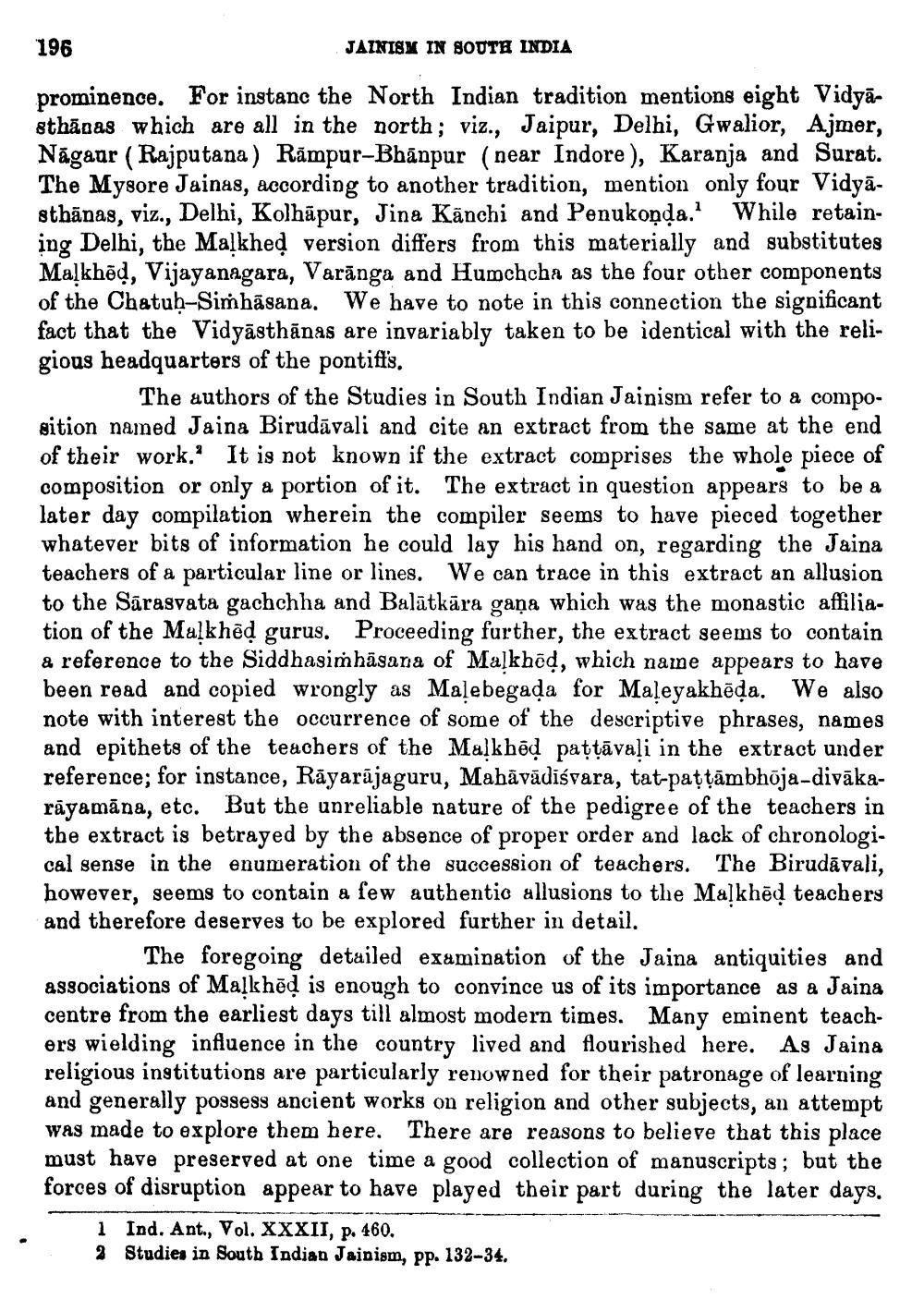________________
196
JAINISM IN SOUTH INDIA
prominence. For instanc the North Indian tradition mentions eight Vidyāsthānas which are all in the north; viz., Jaipur, Delhi, Gwalior, Ajmer, Nāgaar (Rajputana) Rãmpur-Bhānpur (near Indore), Karanja and Surat. The Mysore Jainas, according to another tradition, mention only four Vidyāsthānas, viz., Delhi, Kolhāpur, Jina Kānchi and Penukonda.' While retaining Delhi, the Maļkhed version differs from this materially and substitutes Malkhôd, Vijayanagara, Varānga and Humchcha as the four other components of the Chatub-Simhāsana. We have to note in this connection the significant fact that the Vidyāsthānas are invariably taken to be identical with the religious headquarters of the pontiffs.
The authors of the Studies in South Indian Jainism refer to a composition named Jaina Birudāvali and cite an extract from the same at the end of their work.' It is not known if the extract comprises the whole piece of composition or only a portion of it. The extract in question appears to be a later day compilation wherein the compiler seems to have pieced together whatever bits of information he could lay his hand on, regarding the Jaina teachers of a particular line or lines. We can trace in this extract an allusion to the Sārasvata gachchha and Balātkāra gaṇa which was the monastic affiliation of the Malkhēd gurus. Proceeding further, the extract seems to contain & reference to the Siddhasimhasana of Malkhod, which name appears to have been read and copied wrongly as Malebegada for Maleyakhēda. We also note with interest the occurrence of some of the descriptive phrases, names and epithets of the teachers of the Malkbõd pattāvali in the extract under reference; for instance, Rāyarājaguru, Mabāvādiśvara, tat-paţțămbhāja-divākarāyamāna, etc. But the unreliable nature of the pedigree of the teachers in the extract is betrayed by the absence of proper order and lack of chronological sense in the enumeration of the succession of teachers. The Birudāvali. however, seems to contain a few authentio allusions to the Malkhēd teachers and therefore deserves to be explored further in detail.
The foregoing detailed examination of the Jaina antiquities and associations of Maļkhôd is enough to convince us of its importance as a Jaina centre from the earliest days till almost modern times. Many eminent teachers wielding influence in the country lived and flourished here. As Jaina religious institutions are particularly renowned for their patronage of learning and generally possess ancient works on religion and other subjects, an attempt was made to explore them here. There are reasons to believe that this place must have preserved at one time a good collection of manuscripts; but the forces of disruption appear to have played their part during the later days.
1 Ind. Ant., Vol. XXXII, p. 460. 2 Studies in South Indian Jainism, pp. 132-34.




